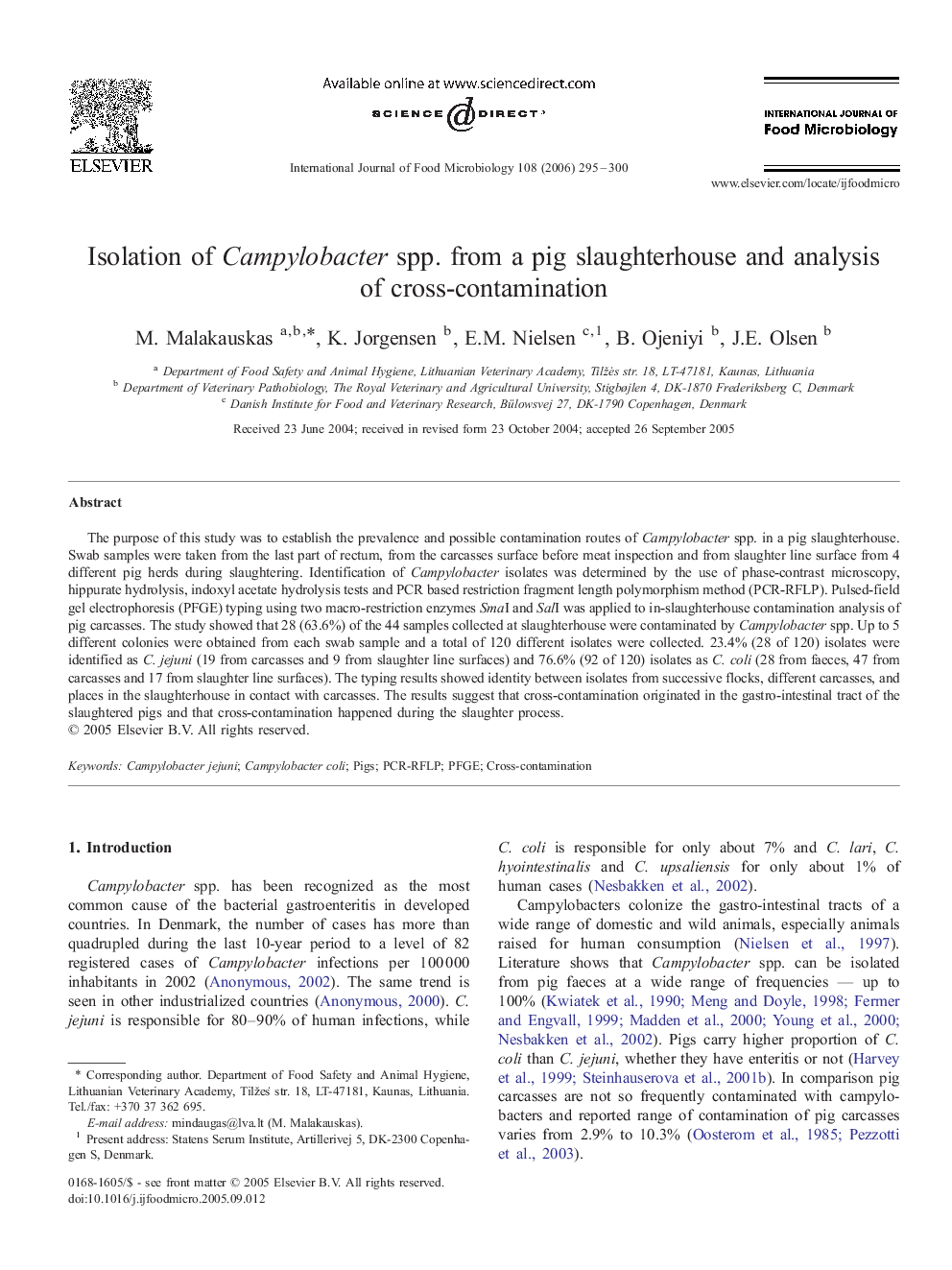| Article ID | Journal | Published Year | Pages | File Type |
|---|---|---|---|---|
| 4370223 | International Journal of Food Microbiology | 2006 | 6 Pages |
The purpose of this study was to establish the prevalence and possible contamination routes of Campylobacter spp. in a pig slaughterhouse. Swab samples were taken from the last part of rectum, from the carcasses surface before meat inspection and from slaughter line surface from 4 different pig herds during slaughtering. Identification of Campylobacter isolates was determined by the use of phase-contrast microscopy, hippurate hydrolysis, indoxyl acetate hydrolysis tests and PCR based restriction fragment length polymorphism method (PCR-RFLP). Pulsed-field gel electrophoresis (PFGE) typing using two macro-restriction enzymes SmaI and SalI was applied to in-slaughterhouse contamination analysis of pig carcasses. The study showed that 28 (63.6%) of the 44 samples collected at slaughterhouse were contaminated by Campylobacter spp. Up to 5 different colonies were obtained from each swab sample and a total of 120 different isolates were collected. 23.4% (28 of 120) isolates were identified as C. jejuni (19 from carcasses and 9 from slaughter line surfaces) and 76.6% (92 of 120) isolates as C. coli (28 from faeces, 47 from carcasses and 17 from slaughter line surfaces). The typing results showed identity between isolates from successive flocks, different carcasses, and places in the slaughterhouse in contact with carcasses. The results suggest that cross-contamination originated in the gastro-intestinal tract of the slaughtered pigs and that cross-contamination happened during the slaughter process.
